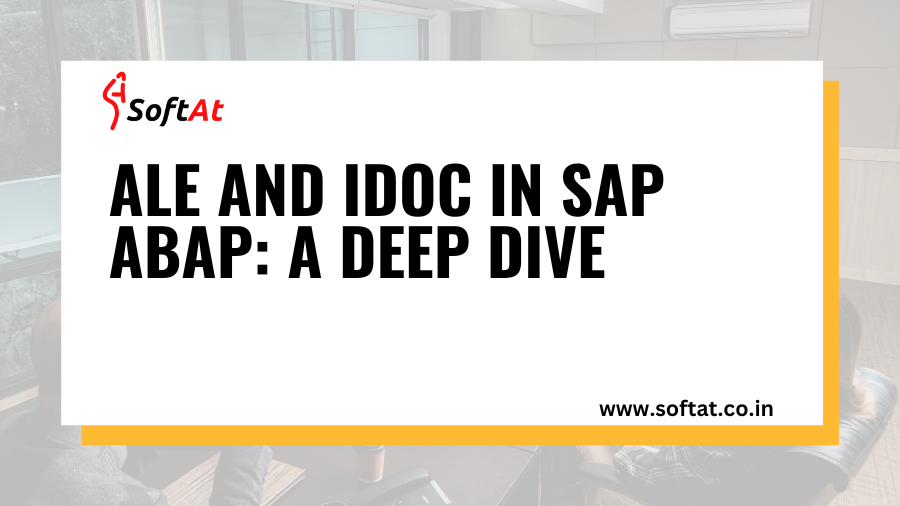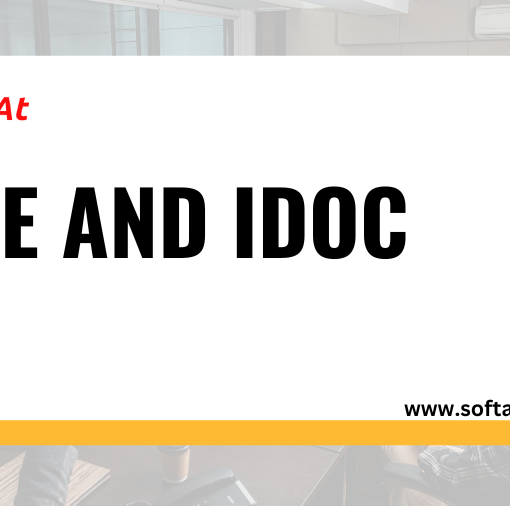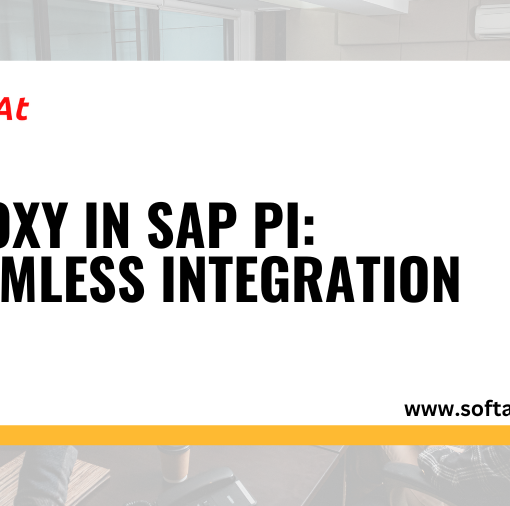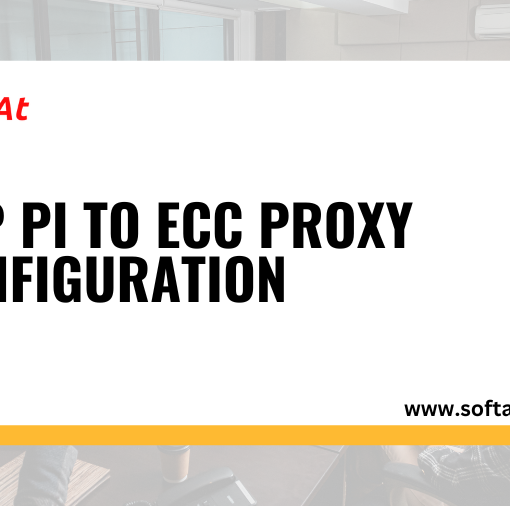In the intricate world of SAP development, seamless data exchange plays a pivotal role in ensuring smooth business operations and fostering information flow across diverse departments. For ABAP developers, two essential tools come into play: ALE and IDoc in SAP ABAP i.e. Application Link Enabling (ALE) and Intermediate Documents (IDocs).
Demystifying the Concepts: Understanding ALE and IDoc Fundamentals In SAP ABAP
Imagine your SAP system as a bustling city, with departments representing factories, warehouses, and sales offices. Data acts as the lifeblood, flowing between these departments to keep operations running smoothly. ALE serves as the city’s transportation network, managing the communication protocols and ensuring data travels securely and efficiently. IDocs act as the cargo containers, carrying specific information like product details, invoices, or customer orders, ensuring consistent understanding and processing across different destinations.
Technical Diving: Unveiling the Inner Workings
Let’s delve into the technical details:
- ALE:
- Utilizes various message types, each defined by specific data structures and functionalities. Think of these message types as specialized trucks designed for different cargo (e.g., financial data, inventory updates).
- Leverages RFC (Remote Function Calls) for real-time data exchange between SAP systems, akin to direct communication between departments within the city.
- Employs Ports and Partner Profiles to define communication channels and security measures, similar to designated routes and checkpoints for secure cargo transportation.
- IDoc:
- Consists of segments and data elements structured according to specific message types, ensuring the cargo (data) is organized and understood uniformly.
- Employs status tables to track the processing status of each IDoc, akin to shipment tracking systems that monitor cargo movement.
- Utilizes function modules for processing incoming and outgoing IDocs, like specialized teams handling cargo loading and unloading at designated terminals.
Unlocking the Power: Practical Applications of ALE and IDoc
Equipped with this understanding, explore the diverse uses of ALE and IDoc:
- Real-time Data Exchange: Synchronize customer orders from sales to production instantly using RFC, ensuring immediate response to demand.
- Asynchronous Data Exchange: Send invoices to suppliers or receive inventory updates from partners using IDocs, enabling efficient data exchange even with external systems.
- Master Data Distribution: Maintain consistent product or customer data across multiple systems through ALE, ensuring everyone operates with the same information.
- Third-Party Integrations: Connect with external applications or services using ALE/IDoc interfaces, expanding your data exchange reach beyond SAP systems.
Navigating the Nuances: Best Practices and Considerations
While powerful, mastering ALE and IDoc requires careful planning and execution:
- Message Type Selection: Choosing the appropriate message type is crucial for accurate data exchange. Consult SAP documentation and understand specific message structures.
- Port and Partner Configuration: Securely configure communication channels and partner profiles to ensure data integrity and prevent unauthorized access.
- IDoc Processing: Develop robust function modules for handling incoming and outgoing IDocs, considering error handling and logging mechanisms.
- Monitoring and Performance: Proactively monitor data flows and system performance to identify and address potential issues promptly.
- Testing and Debugging: Thoroughly test data exchange processes and leverage debugging tools to troubleshoot any errors or inconsistencies.
Beyond the Basics: Advanced Techniques and Future Trends
Expand your skillset with these advanced approaches:
- Function Modules for Custom IDoc Processing: Tailor functionality to specific business needs by developing custom function modules for IDoc handling.
- ALE Business Processes (ABAP) Automate complex data exchange workflows using pre-defined business objects and process templates.
- Cloud Integrations: Explore how ALE/IDoc can be adapted for cloud-based SAP deployments and data exchange scenarios.
The future of data exchange promises exciting advancements:
- Real-time Streaming: Embrace technologies like Kafka for continuous data flow, enabling even more dynamic and responsive business processes.
- API-Based Integrations: Leverage RESTful APIs for simplified integrations with diverse systems and applications.
- AI-Powered Automation: Utilize machine learning to optimize data exchange processes and automate repetitive tasks.
Conclusion: Empowering Seamless Collaboration
ALE and IDoc form the cornerstone of data exchange in SAP ABAP, empowering developers to create robust and integrated solutions. By understanding their functionalities, applications, best practices, and future trends, you can unlock the full potential of this powerful duo and ensure seamless data flow within your SAP landscape. Remember, continuous learning and exploration are key to staying ahead of the curve in this rapidly rapidly evolving technological landscape. Embrace the possibilities, experiment with advanced techniques, and contribute to building a future where efficient and secure data exchange drives innovation and success within your organization.
Browse More About Trending Blogs @
https://www.softat.co.in/edi-integration-with-sap-idoc/
https://www.softat.co.in/difference-between-edi-and-ale/
https://www.softat.co.in/sap-edi-electronic-data-interchange/
https://www.softat.co.in/sap-idoc/





